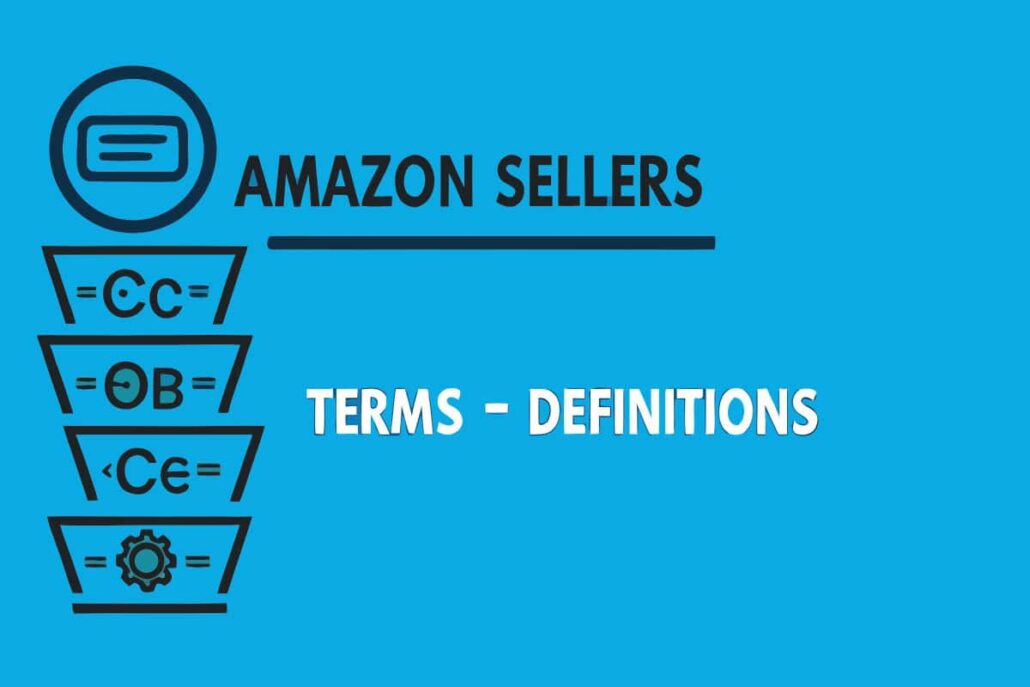
Jumping into the world of Amazon selling can feel like learning a new language. Between FBA fees, ASIN numbers, and BSR rankings, the platform throws so many acronyms at you that even veteran sellers can get tripped up.
Thats why we put together this easy-to-read glossary. Whether you are launching your very first product or trying to scale an existing business, knowing these terms will help you move around Amazons complex ecosystem with a lot more confidence.
Account and Registration Terms
Amazon Seller Central
Your main dashboard for managing your Amazon business. This is where youll upload products, track sales, handle customer service, and manage your account settings.
Amazon Brand Registry
A program that helps brand owners protect their intellectual property on Amazon. Registration provides access to enhanced brand protection tools and A+ Content features.
ASIN (Amazon Standard Identification Number)
A unique 10-character identifier assigned to every product on Amazon. ASINs help Amazon organize its catalog and are essential for product research and inventory management.
SKU (Stock Keeping Unit)
Your internal product identifier. While Amazon assigns ASINs, you create SKUs to track your inventory and variants internally.
UPC (Universal Product Code)
The barcode you usually see on store barcodes anywhere. To list a new product on Amazon, most sellers buy a UPC from GS1 first.
GTIN (Global Trade Item Number)
A catch-all term GS1 uses for any product ID. It covers UPCs, EANs, and other bar code systems around the world.
Fulfillment and Shipping
FBA (Fulfillment by Amazon)
Let Amazon store, pack, and ship your stuff. FBA gives your product Prime perks and also handles returns.
FBM (Fulfillment by Merchant)
You keep the item at home or in your own warehouse and ship when an order comes in. This takes more work but lets you control every step.
Prime Eligibility
Any item that earns the free two-day delivery promise. All FBA shipments get this badge automatically.
Inbound Shipment
The boxes you send to Amazons warehouses for storage. Each送must follow strict packing and label rules or they wont get put away.
FNSKU (Fulfillment Network Stock Keeping Unit)
A special code Amazon slaps on your goods once they arrive. Without the right FNSKU label, your inventory might sit untouched.
Prep Services
If your product shows up unwrapped, Amazon can bubble-wrap, bag, or sticker it for you-for a fee. Using this takes the prep hassle off your plate.
Sales and Performance Metrics
BSR (Best Sellers Rank)
BSR shows where your product sits in its category based on how fast it sells. A smaller number means your item is moving quicker than most others.
Conversion Rate
This figure tells you what fraction of shoppers who see your listing actually buy it. A higher rate usually boosts your position in search results.
Session Percentage
Session Percentage shows the share of all visits that end in a purchase of your product. Amazon uses it to judge how well your page persuades buyers.
Organic Ranking
Your organic rank is the spot your item occupies in search results without any paid ads. Healthy organic ranking rests on strong sales speed, high conversion, and keyword fit.
Sales Velocity
Sales velocity tracks how many units leave the warehouse over a set time, like a week or month. A brisk pace tends to lift your organic placement.
Units Session Percentage
This metric divides total units sold by the number of unique visits and shows the result as a percentage. It reveals how many items get ordered with each customer stop.
Advertising and Marketing
PPC (Pay-Per-Click)
PPC is Amazons ad system that charges you each time a shopper clicks your sponsored listing. It covers Sponsored Products, Sponsored Brands, and Sponsored Display spots.
ACoS (Advertising Cost of Sale)
ACoS calculates how much you spend on ads compared to the sales those ads generate, shown as a percentage. A lower ACoS usually means your ad spend is paying off better.
Total Advertising Cost of Sale (TACoS)
TACoS simply divides all your ad spend by total revenue, both paid and organic. It shows how much your ads really move the overall business, not just paid sales.
Sponsored Products
These ads spotlight single items right in search results and on product pages. Because they are easy to set up, they have become the most popular Amazon ad type.
Sponsored Brands
Sponsored Brands show your logo and several products at the very top of search results. They are great for driving clicks, building recognition, and telling customers who you are.
A+ Content
A+ Content gives brand-registered sellers richer product pages with extra images, charts, and deeper info. The perk is a clearer story that can nudge more shoppers toward a purchase.
Listing and Optimization
Optimization
Listing optimization means fine-tuning titles, images, and text so more shoppers find and buy your item. It usually covers keyword checks, picture upgrades, and sharp copy that grabs attention.
Keywords
Keywords are the exact phrases buyers type when they search. Smart keyword research and placement can turn a hidden listing into one that shows up consistently.
Backend Keywords
Backend keywords sit behind the scenes in the Search Terms box. Shoppers never see them, but Amazon uses them for matching, so they should still be relevant and specific.
Bullet Points
Bullet points are quick benefit highlights just below the title. Each point should read clearly, include a keyword, and explain why the product solves a problem or improves life.
Product Title
The eye-catching headline shoppers see in search results. It should clearly describe the item, pack in important keywords, and stick to Amazon’s title rules.
Main Image
This is your lead photo in search results. Make sure it shows the product against a clean white background, with no extra text or logos, so customers can see exactly what theyre buying.
Inventory and Operations
Inventory Performance Index (IPI)
A score that tells Amazon how well you handle FBA stock. A low number can lead to storage limits, so keep aging items moving and fix stranded listings.
Stranded Inventory
Items sitting in FBA that cant be sold because of listing problems. Even though they arent generating sales, they still count against your available storage space.
Long-term Storage Fees
Extra charges kick in when inventory stays in Amazons warehouses for more than 365 days. To avoid these fees, regularly check your stocks age and take action on slow movers.
Restock Limits
Caps on how much inventory you can ship to FBA centers at any time. These limits help Amazon manage warehouse space, but they can slow restocking popular items.
Stock-out
When a product has zero units available, its considered out of stock. Stock-outs hurt both your organic ranking and the sales momentum you worked hard to build.
Customer Service and Reviews
Feedback
Ratings about how you run your seller account, separate from product reviews. Feedback shows on your profile page and plays a big role in overall account health.
Product Reviews
Customer comments that focus specifically on the product itself. These show on the listing page and often tip the buying decision one way or the other.
Account Health Terms Every Seller Should Know
Order Defect Rate (ODR)
ODR tracks the share of your orders that get flagged–think negative reviews, A-to-Z claims, or chargebacks. Amazon sets the bar at under 1%, so staying below that helps keep your account in good standing.
A-to-Z Guarantee
This is Amazon’s safety net for buyers. If too many customers tap the guarantee, it signals trouble for your seller ratings and overall account health.
Voice of Customer (VOC)
VOC collects real-time customer comments to flag product problems. Listings with steady VOC complaints may get buried or even suspended by Amazon.
Money Matters
Referral Fee
This is the cut Amazon takes on each sale, usually falling between 8% and 15%, depending on the product category. Referral fees are a major piece of Amazons earnings from third-party sellers.
FBA Fees
When you use Fulfillment by Amazon, you pay for storing, picking, packing, and shipping items. These costs vary based on size and weight.
Monthly Storage Fee
Each month your inventory sits in an Amazon warehouse, you rack up storage fees. Rates are higher during peak seasons and climb the longer products linger.
Return Processing Fee
Every time a customer sends an FBA item back, a return fee hits your account. How much you pay depends on the products size and category.
Seller Fees
This catch-all term includes referral and FBA fees plus any ad spend and subscription charges. Tracking it closely helps sellers understand their real profit picture.
Account Health and Policies
Health
Account health gives a snapshot of your selling performance using ODR, cancellation rates, late shipments, and more. A score in the green means things are on track.
Policy Violation
Breaking any of Amazon’s rules counts as a policy violation. Consequences range from a simple warning to a temporary suspension or even a complete account ban.
Suspension
When Amazon suspends your account, it temporarily stops you from selling. To get back online, you must show a clear plan of action.
Plan of Action (POA)
A POA is a simple note that says how you will fix policy or performance problems. Amazon asks for this document whenever an account has been suspended.
Intellectual Property (IP) Complaint
An IP complaint is a claim saying your product steps on someone else’s trademark, copyright, or patent. A single valid claim can pull your listing or even suspend your account.
Advanced Seller Tools
Amazon Attribution
This tool shows how your ads outside Amazon turn into sales on the site. Using Attribution gives you a fuller picture of where your marketing dollars go.
Vine Program
Vine is a special invite-only club. Reviewers get free items in exchange for honest feedback, helping new products gain trust quickly.
Lightning Deals
Lightning Deals are flash sales that last for hours, not days. When featured, they pop up on Amazon’s deals pages and can push traffic through the roof.
Brand Analytics
Open only to brand-registered sellers, this dashboard offers stats like keyword rank and basket study. The info helps brands find growth areas and refine listings.
Seller Support
Seller Support is Amazon’s friendly help desk for anyone who sells on the platform. They answer policy questions, clear account problems, and troubleshoot tech glitches.
Mastering Amazon’s Language for Success
Learning these terms is only the starter kit for selling on Amazon. Because all these ideas connect, sellers who grasp the lingo can unlock bigger sales.
Start with the basics: ASIN, FBA, and listing optimization. Once comfortable, graduate to numbers like TACoS and inventory performance. The best Amazon sellers never stop learning and stay ready for the next change the platform introduces.
Keep this glossary within reach as you build your Amazon business. The sooner you master these terms, the faster youll spot problems and seize new chances in the worlds biggest marketplace.

